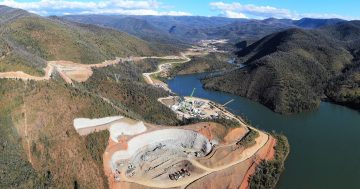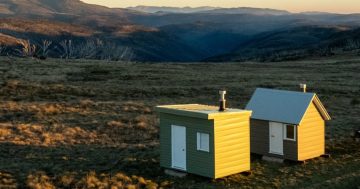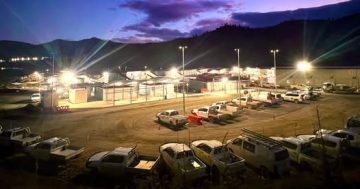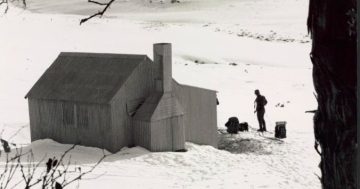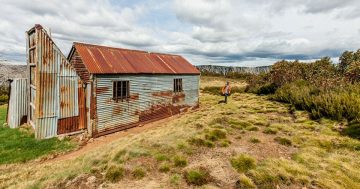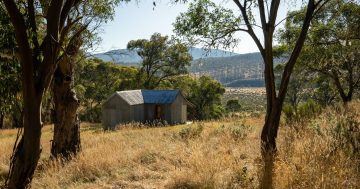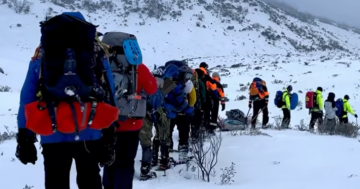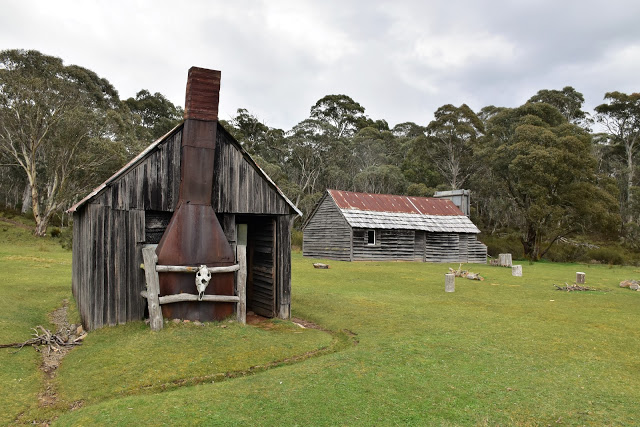
The Tin Mine Huts are some of the many huts that dot Kosciuszko National Park. Photo: Kevin Moss, Goin’ Feral One Day at a Time.
The $300,000 Snowy Hydro will pay for accidentally creating a sinkhole in Kosciuszko National Park will be used to help rebuild five huts that were destroyed in the Black Summer bushfires.
In addition, the Commonwealth government-owned company has also been approved to fix the eight-metre-wide and five-metre-deep hole at a cost of $100,000.
When the tunnel boring machine ‘Florence’ was operating in December 2022, an “unintended surface depression” formed outside the agreed construction area in the national park, the Department of Planning, Housing and Infrastructure (DPHI) said.
As part of an accepted enforceable undertaking instituted due to the sinkhole, Snowy Hydro must make a financial contribution of $300,000 to the NPWS Alpine Hut Rebuilding Program.
An enforceable undertaking is a voluntary and binding agreement “to deliver tangible benefits for the environment and community”, the DPHI said.
The hut rebuilding program started after the 2019-2020 bushfires when 11 of the National Parks and Wildlife Service’s (NPWS) huts in Kosciuszko were destroyed.
The $300,000 will be used to help rebuild five of these – Four Mile, Happys, Round Mountain and the two Linesmans Huts on 15 Mile Ridge.
Works are expected to start soon and be finished by 2025.
“Snowy Hydro has worked closely with National Parks and Wildlife Service to provide complementary funding for the huts rebuilding program in Kosciuszko National Park,” a Snowy Hydro spokesperson said.
“We are very pleased to support this program, which provides tangible benefits for the park and its users.”
The DPHI has also approved a modification to allow Snowy Hydro to fix the sinkhole, with the estimated $100,000 works expected to start soon.
“Work on the surface depression, which measures eight metres by five metres, will begin after the relevant management plan has been approved by the Department of Planning and Environment,” the Snowy Hydro spokesperson said.
“This work is expected to take about one to two weeks to complete and will include revegetating the area.”
A NPWS spokesperson said that during the 2019-2020 bushfires, many huts in Kosciuszko National Park were saved due to the efforts of firefighters from NPWS and the NSW Rural Fire Service.
The spokesperson said changes to heritage conventions had given NPWS the option to rebuild destroyed or damaged huts as a way of retaining social significance of the place and the “people connection”.
“The huts are being built by NPWS with the assistance of family descendants and volunteers from the Kosciuszko Huts Association. The huts are being built to look similar in original size, shape and materials,” the NPWS spokesperson said.
“Some of the timber used has been milled from burnt trees that were felled during roadside risk reduction programs following the bushfires, but some hidden modern fixings and steel footings have been used to make the huts last longer, with less maintenance necessary, and fire-resistant strategies have been including treating timbers with fire retardant, and angling/covering windowsills with metal to shed embers.
“Local timber millers milled some of the specially splayed boards, and rebuilding the huts keeps timber skills alive such as teaching current generations how to split slabs with a maul and froe, and fixing two poles with a ‘Queensland hitch.'”
The NPWS spokesperson also said three generations of the Vickery family had gathered for the recent opening of Vickerys Hut in November 2023, with descendants and others associated also attending the opening of the Sawyers Rest House and Delanys Hut in April 2023.
The DPHI deputy secretary of development assessment and infrastructure, David Gainsford, said the department’s compliance team monitored and enforced large development and infrastructure projects with strict conditions in place to protect the environment and local communities.
“This activity resulted in unintended environmental impacts that Snowy Hydro is addressing through rehabilitation and additionally, we’ve accepted the enforceable undertaking for a financial contribution to NPWS as an appropriate regulatory response, one that benefits the community,” he said.







